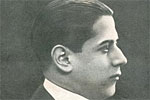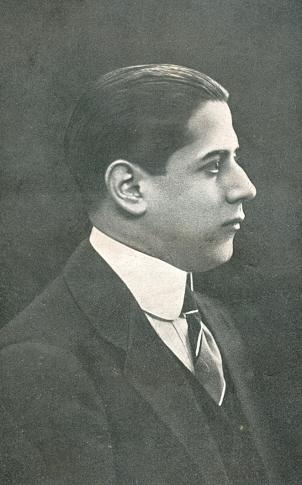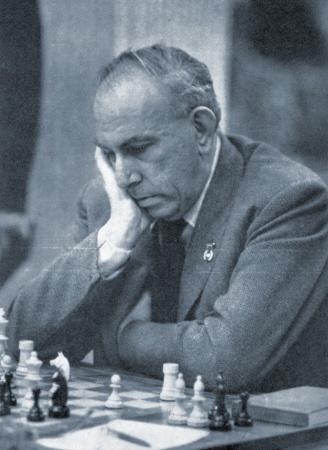


By Edward Winter
Capablanca won a tournament in New York, 1914 with a clean score. There were 14 draws in his world title match against Lasker and 21 draws in his match with Alekhine. The AVRO tournament was in 1937. These and countless other obvious mistakes have appeared in various editions of Capablanca’s Hundred Best Games of Chess by Harry Golombek (originally published by G. Bell and Sons, Ltd., London, in 1947). Below is a digest of the C.N. items written on the topic, revealing much about the Golombek book itself (on which it is impossible not to have mixed feelings) but also about the carefree attitude to accuracy often adopted by publishers/reprinters. One of them, as will be seen, even indulged in some chicanery in an attempt to cover its tracks.

In the October 1976 CHESS, pages 10-12, we drew attention to the fact that the tournament and match charts included in Capablanca’s Hundred Best Games of Chess by Harry Golombek were riddled with errors. It might, however, be added that du Mont’s ‘Memoir of Capablanca’ in that book is also a fiasco, as is shown by the following examples: Page 1: (final paragraph), for 12 read 13. Page 2: The 1927 world championship match had 25, not 21, draws. Page 2: Capa lost the match at the age of 39, not 38. Page 2: The AVRO tournament was in 1938, not 1937. Page 3: Wrong score of the Corzo match. Page 9: There were ten, not 14, draws in the 1921 Lasker match. Page 10: New York, 1927 did not decide a challenger for Capa’s title. Page 10: At New York, 1927 Capa was 2½, not 3½, points ahead of Alekhine. Page 11: Capablanca and Alekhine played two, not three, exhibition games. Page 12: The Semmering tournament was in 1937, not 1935. Page 12: At AVRO, 1938 Alekhine was 46 (just) and not 47. Page 13: Capa played 16 games at the 1939 Buenos Aires Olympiad, not ten. Page 13: He did not die of a heart attack. Page 16: It is not correct that Capa wrote only three books. Page 17: In Chess Fundamentals the Cuban gave six, not eight, of his losses. Nor were these ‘the whole of his lost games up to that time’.
Together with the mistakes pointed out in the CHESS article, the above is clear proof of gross carelessness, but some more general questions arise. The book has been reprinted many times since its first appearance in 1947, so why have the necessary corrections never been made? If it was considered too expensive or impractical to make them, could not at least an errata sheet have been issued?
A three-quarters version, copyright 1977 by Walter de Gruyter & Co., was published under the title J.R. Capablanca 75 seiner schönsten Partien, ‘übersetzt und bearbeitet von R. Teschner’. Now, surely here the opportunity would be taken to set the record straight. Not at all; two or three of the most obvious errors are rectified (Semmering, 1937; AVRO, 1938) but that is about it.
The only possible conclusion from the above is that author, memoir writer, publishers and translator have all failed to carry out their tasks responsibly. It is alarming to think that for a long time Capablanca’s Hundred Best Games of Chess was considered to be the standard work on the Cuban and that many statisticians, retrograders, etc. must have based their calculations on its laughably inaccurate facts and figures.
(1080)

José Raúl Capablanca
The BCM has just reprinted Capablanca’s Hundred Best Games of Chess by Harry Golombek. [This C.N. item was written in 1989.] An insert lists about a dozen corrections to du Mont’s memoir and the tournament/match records, but an even greater number of errors (just from those parts of the book) remain uncorrected, even though they have been pointed out publicly in, for instance, the October 1976 CHESS and C.N. 1080. We have sent the BCM a Letter to the Editor about this matter, quoting examples, and therefore give just one here: how could it still have been overlooked that on page 9 and page 20 the book claims that there were 14 draws (instead of ten) in the 1921 Lasker v Capablanca world title match?
Golombek has not updated or corrected any of the annotations, even though over the past 40 years he must have gained many new insights and noted occasional errors (such as a missed mate in two in the note to move 26 on page 56 – a mistake that seems to have originated with Capablanca himself). Yet despite the many missed opportunities in this reprint, it is good to see Capablanca’s Hundred Best Games of Chess available again. In our opinion, it is one of the finest of the many ‘Capablanca’s best games’ collections. As H.G. himself revealed on page 14 of Wade and O’Connell’s The Games of Robert J. Fischer, it is a book that Fischer read and appreciated.
(1928)
In the above-mentioned article in the October 1976 CHESS our comments included the following:
‘On page 19 of Golombek’s book there is a reference to a tournament held in New York in 1914 won by Capablanca with a clean score of 11 wins out of 11. On page 60 we find a crosstable headed "New York, 1914", but this is actually the record of a tournament played in July 1913. If this were a simple error or reversal of dates there would be little harm done, but the unfortunate result of the muddle is that a whole new imaginary tournament has been created comprising 11 extra Capablanca victories that never existed.’

Book inscription by Golombek to Bruce Hayden (C.N. 4478)
Harry Golombek’s book Capablanca’s Hundred Best Games of Chess has highly inaccurate biographical material and results tables. Some examples were given in C.N. 1080, but the BCM took no notice when it reprinted the book in 1989. It gave just a cursory errata slip (which was itself wrong about a ‘missing’ tournament (Hastings, 1929-30), since it claimed that Capablanca scored three draws, instead of five).
On 22 November 1989, quoting all the above-listed examples, we informed the BCM Editor that many obvious factual errors had not been corrected. Our letter was ignored for three years, until the BCM (October 1992, page 520) found an exquisitely deceitful way of using it to ridicule us: out of all our corrections the magazine simply mentioned one (regarding Hastings, 1929-30), thus deluding its readers into believing that our complaint about the book merely concerned a single matter of detail.
To set the record straight (about this and other issues), on 5 October 1992 we wrote another letter to the BCM Editor. Naturally it too was suppressed.
(1951)
As mentioned in a footnote on page 269 of Kings, Commoners and Knaves, the BCM neglected to correct about 150 factual mistakes in the Golombek book.
A curious blind-spot in Harry Golombek’s writings over several decades was his oft-expressed belief that there were 18 games (rather than 14) in the 1921 world championship match between Lasker and Capablanca. See, for instance:
(3035)
For the indolent and/or rapacious ‘publisher’ the simplest venture is to take an old book and reprint it as it stands, however many factual mistakes it is known to contain. A notable victim of this process has been a volume which, in so many respects, is lamentably inaccurate: Capablanca’s Hundred Best Games of Chess by H. Golombek (London, 1947). In recent decades it has been the subject of a number of push-button reprints, with no effort made to set the record straight.
One reprint was by the BCM, in 1989. For a summary of the magazine’s subsequent duplicitous conduct, see pages 268-269 of Kings, Commoners and Knaves [i.e. the item C.N. 1951 given above]. The then Editor of the BCM, Mr Bernard Cafferty, has never, to this day, apologized for deceiving his readers.

Harry Golombek
In September 1996 John Nunn informed us that B.T. Batsford Ltd. was about to bring out an algebraic edition of the book, and he asked us if a list of known errors in the original could be provided. Within the limited time on offer we were happy to oblige, and our reply was eight pages long. The points listed ranged from relatively minor or debatable matters (such as faulty accents and transliterations) to all kinds of gross factual gaffes. Overall, we feel that Batsford made good use of our corrections in its algebraic production, Capablanca’s Best Games (London, 1996).

For the convenience of readers who possess only the descriptive edition (either the original or one of the insouciant reprints) and would welcome an errata list, our letter of 29 September 1996 to Dr Nunn is reproduced here.
(3586)
In a wide-ranging letter about books on pages 58-59 of the December 1950 CHESS A.C. Simonson wrote:
‘I like to find instances where the annotators make mistakes. The armchair critics, as I like to term them, are always looking to criticize the players; in doing so, they very often make laughable mistakes themselves.’
And:
‘Incidentally, although I have discovered such errors in every single chess book, the prize seems to be captured by H. Golombek with his Capablanca’s Hundred Best Games, which contains – literally – hundreds of typographical, diagrammatic and annotation errors.’
On page 81 of the January 1951 issue Golombek made one of his rare contributions to CHESS:
‘... I should like to point out that this is quite untrue with regards to the English edition. To the best of my knowledge it contains only one misprint which, I think you will agree is well below the average for a book of its size and type.
However, it is true that the American edition contains many errors. This was due to the fact that the American publishers, by a stupid blunder on their part, failed to incorporate my galley proof corrections in the final proofs they sent to the printers. This was a circumstance over which neither my English publishers nor myself had any control as we were in no way responsible for the American printing.’
The CHESS Editor was unconvinced:
‘Mr Simonson gave some random examples of the errors and, whilst the misprints are admittedly almost absent from the English edition, his analytical criticisms do apply to it, seem well based and, for the first few games alone, with diagrams would fill a page of CHESS.’
As regards Golombek’s recognition of only one misprint in the English edition of his book, it may be recalled that in C.N. 3586 we provided an eight-page list of mistakes of all kinds. It would certainly have been far longer had it dealt with the US edition.
(3767)
C.N. 2703 pointed out that the first US edition even misspelled Golombek’s name on the dust-jacket:


Page 14 of The Immortal Games of Capablanca by F. Reinfeld (New York, 1942)

Page 20 of Capablanca’s Hundred Best Games of Chess by H. Golombek (London, 1947)
In the Lasker match there were ten, not 14, draws. The Euwe match was in 1931, not 1932. The only matter on which the books disagree is the year of Capablanca’s match against Corzo, and both are wrong. It was played in 1901.
The two books have been the subject of modern reprints which have not bothered to correct these (and innumerable other) elementary mistakes.
(5904)
As has been shown, Golombek had a longstanding difficulty in relating correctly the basic facts of Capablanca’s record, and our final item here (C.N. 1406) shows how a concentration of errors remained in successive editions of another book of his.
On page 220 of The Game of Chess (Penguin) Harry Golombek writes of Capablanca: ‘In 1905 he beat Marshall by +8 –1 =14; in 1919 he beat Kostich 5-0; in 1921 he won a world championship match against Lasker by +4 –0 =14 and in 1932 he beat Euwe by +2 –0 =8.’
a) for 1905 read 1909; b) for =14 in the Lasker match read =10; c) for 1932 read 1931. We pointed out this concentration of errors on page 11 of the October 1976 CHESS, but no corrections were made in the third edition of the book (1980, reprinted 1986, page 222). Nor is the right information given in the French translation of the book (published by Payot).
The back cover of the latest Penguin edition says that since 1954 The Game of Chess ‘has sold over a million copies and the text has been revised and updated’.
More information about the Batsford edition of Golombek’s book on Capablanca, produced by John Nunn, is given in Capablanca Goes Algebraic. See also our list Books about Capablanca and Alekhine, which catalogues the various editions of the Golombek book on the Cuban.
Submit information or suggestions on chess explorations
All ChessBase articles by Edward Winter
 Edward
Winter is the editor of Chess
Notes, which was founded in January 1982 as "a forum for aficionados
to discuss all matters relating to the Royal Pastime". Since then, about 6,980
items have been published, and the series has resulted in four books by Winter:
Chess
Explorations (1996), Kings,
Commoners and Knaves (1999), A
Chess Omnibus (2003) and Chess
Facts and Fables (2006). He is also the author of a monograph
on Capablanca (1989).
Edward
Winter is the editor of Chess
Notes, which was founded in January 1982 as "a forum for aficionados
to discuss all matters relating to the Royal Pastime". Since then, about 6,980
items have been published, and the series has resulted in four books by Winter:
Chess
Explorations (1996), Kings,
Commoners and Knaves (1999), A
Chess Omnibus (2003) and Chess
Facts and Fables (2006). He is also the author of a monograph
on Capablanca (1989).
Chess Notes is well known for its historical research, and anyone browsing in its archives will find a wealth of unknown games, accounts of historical mysteries, quotes and quips, and other material of every kind imaginable. Correspondents from around the world contribute items, and they include not only "ordinary readers" but also some eminent historians – and, indeed, some eminent masters. Chess Notes is located at the Chess History Center. Signed copies of Edward Winter's publications are currently available.